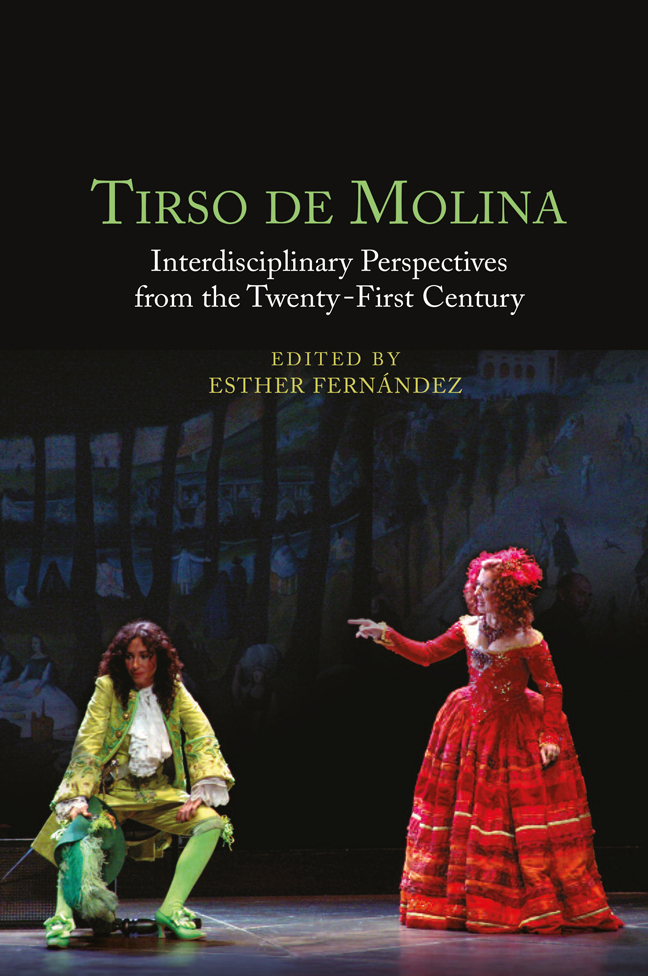9 - Dressing the Part: Costuming and Material Culture in Tirso de Molina
Published online by Cambridge University Press: 02 March 2024
Summary
In Lazarillo de Tormes, Miguel de Cervantes’ Don Quijote de la Mancha, and María de Zayas’ Desengaños amorosos, a reader encounters numerous cases of mistaken identity, social climbing, and rigid class structures that limit characters’ actions. Nearly all of these cases invoke an associated visual signifier: a costume. Many characters change the course of their lives by employing a simple costume change. Modern readers approaching comedia texts might respond to this plot device with incredulity or skepticism. While conspicuous consumption is certainly a part of twenty-first-century culture and use of expensive clothing might telegraph the wearer’s desire to perform wealth or to create spectacle, dress typically does not carry implications tied to a particular legally-codified social standing. The ability of a twentyfirst- century audience or readership to interface with a seventeenth-century theatrical text and interpret it successfully requires adjusting to the context of early modern Spain, where clothing was a matter of law. Recognition that material culture carried significant weight in creating and communicating identity is particularly important. Individuals in early modern Spain, both on and off stage, relied on the clothing they wore to telegraph their social status to those around them. Foundational work undertaken by Carmen Bernís, Bernardo J. García García, Melveena McKendrick, Susan Fischer, Stacey Parker Aronson, Elizabeth Cruz Petersen, and others foregrounds the social changes and pressures of the environment in which the comedia was created. Building on that work, this essay contextualizes costumes within legal restrictions on clothing, source descriptions of garments, and textual examples to create a framework for understanding theatrical costuming during Tirso de Molina’s time. That framework can help a twenty-first-century readership or audience to visualize the costuming of Tirso’s time, to recognize its use as an element of theatrical character and plot development, and to interpret its significance as an element of the spectacle created on stage.
Theater is one manifestation of the human desire to make sense of ourselves and our environment through representation. Richard Hornby emphasizes the importance of theatrical performance to deciphering the human condition, observing that theater (and I would add, the costuming associated with it) operates using a common framework: “sets of codes that enable people to understand themselves and their world, through the medium of their culture” (1986: 52). Some of these “codes” can become so entrenched in a culture as to appear inherent.
- Type
- Chapter
- Information
- Tirso de MolinaInterdisciplinary Perspectives from the Twenty-First Century, pp. 131 - 144Publisher: Boydell & BrewerPrint publication year: 2023



